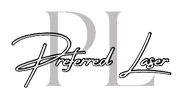Blog

Laser hair removal is a cutting-edge cosmetic procedure that uses concentrated beams of light, or lasers, to target and destroy hair follicles. By focusing on the pigment in the hair, the laser effectively heats and damages the follicle, which inhibits future hair growth. Over time, this can lead to significant hair reduction, and in many cases, the results are long-lasting, if not permanent.
The Evolution of Laser Hair Removal
While it may seem like a modern luxury, the concept of laser hair removal has been around for several decades. The first laser designed to remove hair was developed in the 1960s, but it wasn’t until the 1990s that the procedure became widely accessible and effective for the general public. Advances in technology have made laser hair removal safer, faster, and more efficient, making it one of the most popular hair removal methods available today.
Why Choose Laser Hair Removal?
So, why are so many people turning to laser hair removal? Here are some of the key benefits:
- Long-Lasting Results: Unlike shaving or waxing, which need to be done regularly, laser hair removal offers long-term hair reduction. After a series of sessions, many people experience a significant decrease in hair growth, with some areas remaining hair-free for years.
- Precision: Lasers can selectively target dark, coarse hairs while leaving the surrounding skin undamaged. This precision is particularly beneficial for sensitive areas like the face, bikini line, and underarms.
- Speed: Each laser pulse takes a fraction of a second and can treat multiple hairs simultaneously. Smaller areas like the upper lip can be treated in just a few seconds, while larger areas like the legs or back might take half an hour or so.
- Convenience: Imagine a life where you don’t have to worry about shaving every day or booking regular waxing appointments. Laser hair removal offers a level of convenience that other methods simply can’t match.
Who is Laser Hair Removal For?
While laser hair removal is suitable for most people, it’s particularly effective for those with lighter skin and darker hair. This is because the laser targets the pigment (melanin) in the hair. However, advancements in laser technology have made it possible to treat a wider range of skin tones, including those with darker skin. Now the restrictions lie if you have lighter hair with less melanin present. It's important to have a thorough consultation to determine if laser hair removal is right for you.
Final Thoughts
Laser hair removal is more than just a trend—it’s a long-term solution for those looking to simplify their grooming routine and enjoy smooth, hair-free skin with minimal effort. Whether you’re tired of the constant maintenance that comes with shaving or the discomfort of waxing, laser hair removal offers an effective alternative that can help you achieve the results you've been looking for.
Stay tuned for our next post in this series, where we’ll dive into the science behind laser hair removal and explain how this innovative technology works to keep you looking and feeling your best.

Taking the plunge into laser hair removal is an exciting step toward achieving smooth, hair-free skin. However, if you’re new to the process, you might be wondering what exactly happens during a session. In this post, we’ll walk you through the entire experience—from preparation to aftercare—so you know exactly what to expect.
Preparation: Getting Ready for Your Appointment
Proper preparation is key to ensuring a successful laser hair removal session. Here are some steps you should take before your appointment:
- Shave the Treatment Area: Shave the area you plan to treat 24 to 48 hours before your session. This allows the laser to focus on the hair follicle beneath the skin without the interference of surface hair. Avoid waxing, plucking, or using depilatory creams, as these remove the hair root that the laser targets.
- Avoid Sun Exposure: Stay out of the sun and avoid tanning beds for at least two weeks before your appointment. Sunburned or tanned skin can increase the risk of complications, such as burns or hyperpigmentation.
- Skip Certain Products: On the day of your treatment, avoid applying lotions, deodorants, or makeup to the area being treated. These products can interfere with the laser’s effectiveness and increase the risk of irritation.
- Consult with the Provider: If you’re taking any medications or have any skin conditions, inform our provider ahead of time. Some medications can make your skin more sensitive to the laser. After completing the legally required GFE (Good Faith Exam) and thorough consultation, you will be cleared for treatment!
The Procedure: What Happens During a Laser Hair Removal Session?
When you arrive at your appointment, here’s what you can expect:
- Preparation: Your laser professional may take photos for comparison later on. You’ll then be given protective eyewear to shield your eyes from the laser.
- Marking the Treatment Area (if larger area): Your provider may use a white pencil or marker to outline the areas to be treated. This helps them target the laser precisely and ensures that no spots are missed.
- Cooling and Comfort: Our device has a build in DCD (Dynamic Cooling Device) that provides optimal safety and comfort during treatment. Even more, a cooling gel, compress, or device may be applied to your skin to help minimize discomfort immediately after treatment.
- The Laser Application: The provider will use a handheld laser device to deliver pulses of light to the treatment area. You might feel a sensation similar to a rubber band snapping against your skin, but this discomfort is usually minimal and brief. The duration of the session depends on the size of the area being treated—smaller areas like the upper lip can take just a few seconds, while larger areas like the legs might take up to half an hour or more.
- Post-Treatment Care: Once the session is complete, the professional may apply a soothing lotion or aloe vera gel to calm the skin. You might experience some redness and swelling of the follicles, similar to a mild sunburn or red-raised goosebumps, but this usually subsides within a few hours. For individuals with increased histamine reactions this may last longer.
Pain and Discomfort: What Does Laser Hair Removal Feel Like?
One of the most common questions about laser hair removal is, “Does it hurt?” The answer varies depending on individual pain tolerance, the area being treated, thickness of the hair, and the type of laser used. Generally, the sensation is described as a quick snapping feeling, a mild pinprick, or a surge of heat.
Over time, many people find that the discomfort decreases as the hair becomes finer and less dense with each session.
Aftercare: Taking Care of Your Skin Post-Treatment
Proper aftercare is essential to achieving the best results and minimizing any potential side effects. Here’s how to care for your skin after a laser hair removal session:
- Avoid Sun Exposure: Just like before your treatment, you’ll want to stay out of the sun for at least two weeks after your session. Sun exposure can irritate your skin and increase the risk of pigmentation changes.
- Use Gentle Products: For the first few days after treatment, avoid hot showers, saunas, and vigorous exercise that can cause excessive sweating. Stick to gentle skincare products and avoid exfoliating the treated area until your skin has fully healed.
- Moisturize and Soothe: Keep your skin hydrated with a gentle, fragrance-free moisturizer. Aloe vera gel can also be soothing if your skin feels irritated.
- Be Patient with Results: You may notice some shedding of treated hairs in the days following your session. This is normal and a sign that the treatment is working. Avoid plucking or waxing these hairs—let them fall out naturally.
Final Thoughts
Laser hair removal is a straightforward and relatively quick procedure, but knowing what to expect can help you feel more at ease. By preparing properly, understanding the procedure, and following post-treatment care guidelines, you can ensure that your laser hair removal journey is as smooth and comfortable as possible.
Click Here to Visit Our Laser Hair Removal Page for Detailed Pre and Post Care
In our next post, we’ll explore laser hair removal for different body parts, from the face to the legs, and discuss how to tailor your treatment plan to meet your specific needs.

Laser hair removal is a versatile solution that can be tailored to nearly every part of the body, offering a long-term alternative to shaving, waxing, or plucking. Whether you’re looking to smooth your face, underarms, legs, or even more sensitive areas, laser hair removal can be adapted to your specific needs. In this post, we’ll explore how laser hair removal works for different body parts, including considerations for sensitive areas and gender differences in treatment.
Laser Hair Removal for the Face
The face is one of the most common areas where people seek laser hair removal, especially for areas like the upper lip, chin, cheeks, and jawline. Here’s what you should know:
- Precision is Key: Facial hair can be finer and more delicate than body hair, so it’s crucial to use a laser that’s precise and designed for smaller areas. Our GentleMax Pro laser is versatile with many spot sizes to accurately target your desired areas safely and effectively.
- Multiple Sessions Required: The face and other specific areas may require more frequent touch-ups, especially in areas prone to hormonal hair growth, like the chin, upper lip, underarms, or bikini area.
- Considerations: The skin on the face is more sensitive and exposed to the elements, so post-treatment care is essential. Avoiding sun exposure and using gentle skincare products are vital to prevent irritation or hyperpigmentation.
Laser Hair Removal for Unique Areas
There are very few limits as far as what different parts of the body can be treated. The areas that pose a risk of safety such as inside the orbital rim (bony edge surrounding the eye), inside any body canals, or places that cannot physically grow hair like the palms of your hands and feet. The possibilities are nearly endless! Many people get laser hair removal on areas such as ears, widows peak, fingers, areolas, and many more! The GentleMax Pro is safe, versatile, and effective.
Laser Hair Removal for the Body
Take back the hours you've spent on shaving! For larger areas like the legs, arms, and back, laser hair removal offers a convenient way to reduce hair over time. Here’s what to expect:
- Larger Areas, Longer Sessions: Treating larger areas like the legs or back will naturally take longer than smaller areas like the face. Depending on the size of the area and number of areas being treated simultaneously, sessions can last anywhere from 20 minutes to half an hour or more.
- Fewer Sessions Needed (Sometimes): Body hair is often coarser and thicker than facial hair, making it easier for the laser to target and destroy the follicles. As a result, fewer sessions may be required, though this varies by individual due to hormones, hair thickness, and other significant factors. Be sure to read our blog about The Science Behind Laser Hair Removal for more details.
Laser Hair Removal for Sensitive Areas
Sensitive areas such as the bikini line, underarms, and Brazilian are more prone to irritation and discomfort, but laser hair removal can still be highly effective. This is typically due to having thicker hair in the follicle, which both sensation and irritation can decrease with each treatment.
- Tailored Approach: Sensitive areas often require a tailored approach, with specialized techniques to ensure comfort and safety. In addition to the GentleMax Pro's Dynamic Cooling Device, we have many tools and devices to further enhance comfort.
- Effective Results: Despite the sensitivity, laser hair removal in these areas can offer significant benefits, including smoother skin and reduced ingrown hairs, which are common with shaving or waxing or in these sensitive areas in general.
- Post-Treatment Care: A little extra attention can be beneficial after treating sensitive areas. Loose clothing, ensuring you're avoiding heat (like hot showers or saunas), and applying soothing products like aloe vera can help minimize irritation.
Gender Considerations in Laser Hair Removal
Laser hair removal is suitable for all genders, but there are some differences in how the treatment is approached for men and women:
- Men’s Treatment Areas: Common areas for laser hair removal in men include the chest, back, shoulders, and facial hair, such as the beard or neckline. Men typically have coarser hair, which may require more sessions but can also lead to more noticeable results.
- Women’s Treatment Areas: Women often seek laser hair removal for areas like the legs, bikini line, underarms, and facial hair. Hormonal factors can play a role, especially with facial hair, so maintenance sessions might be needed over time.
- Tailoring the Treatment: Regardless of gender, the key to successful laser hair removal is tailoring the treatment plan to the individual’s hair type, skin tone, and the specific area being treated.
Final Thoughts
Laser hair removal can be adapted to suit virtually any part of the body, offering a personalized approach to hair reduction. Whether you’re targeting a small area like the upper lip or a larger area like the legs, understanding the specific considerations for each body part helps you set realistic expectations and achieve the best results.
In our next post, we’ll tackle common myths and facts about laser hair removal, helping you separate fact from fiction as you consider this long-term hair removal solution.



